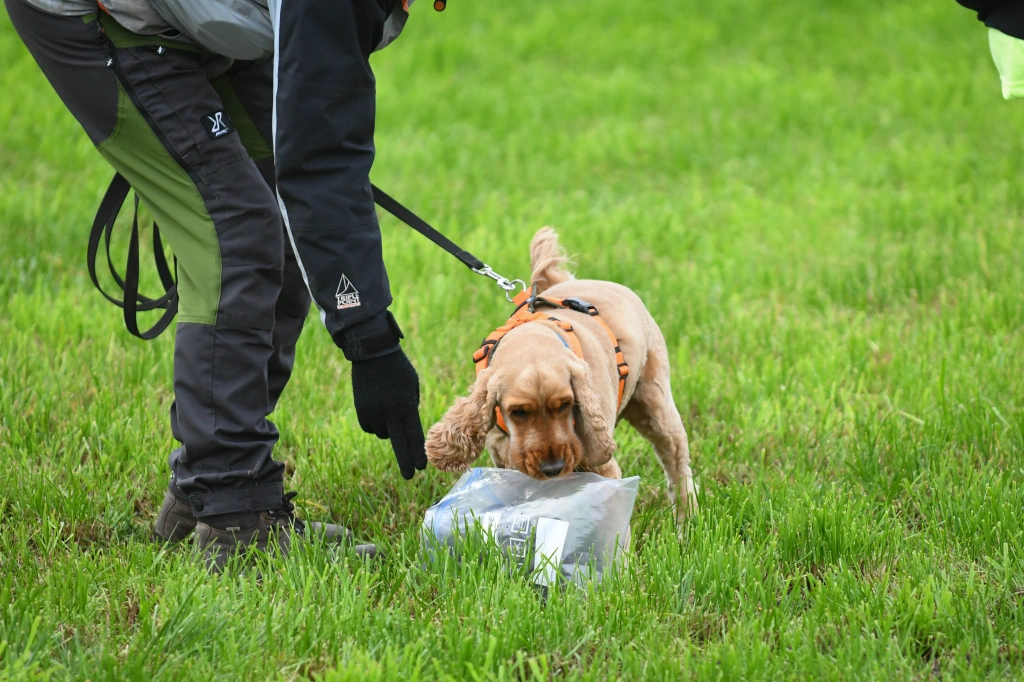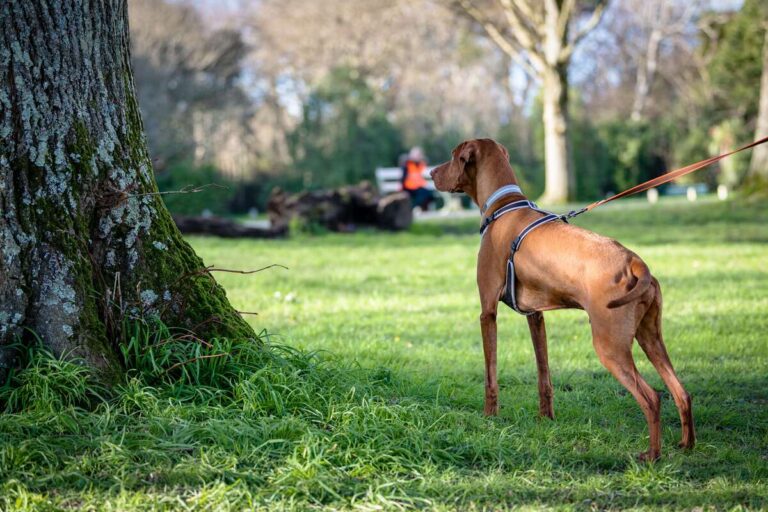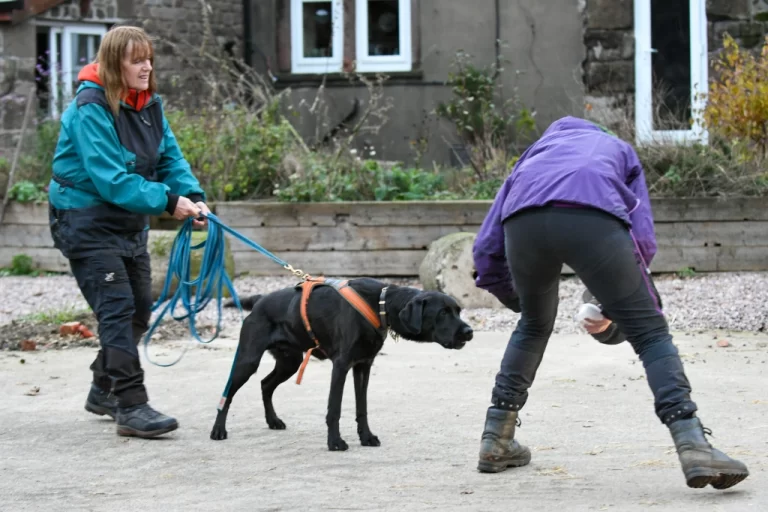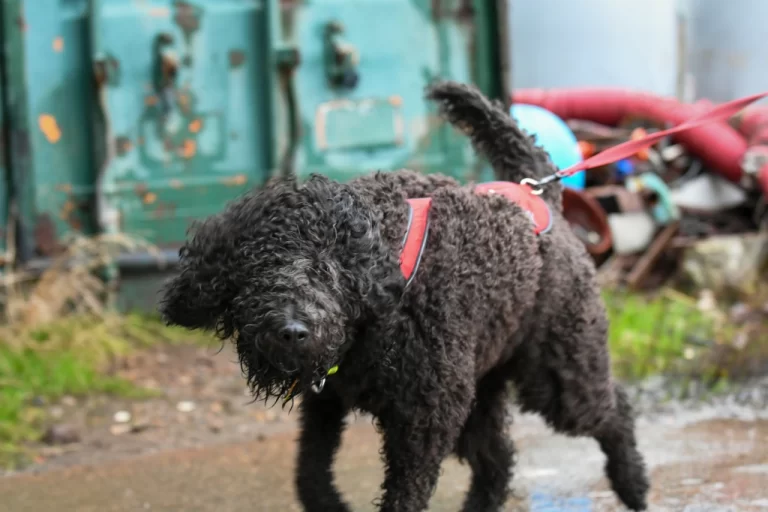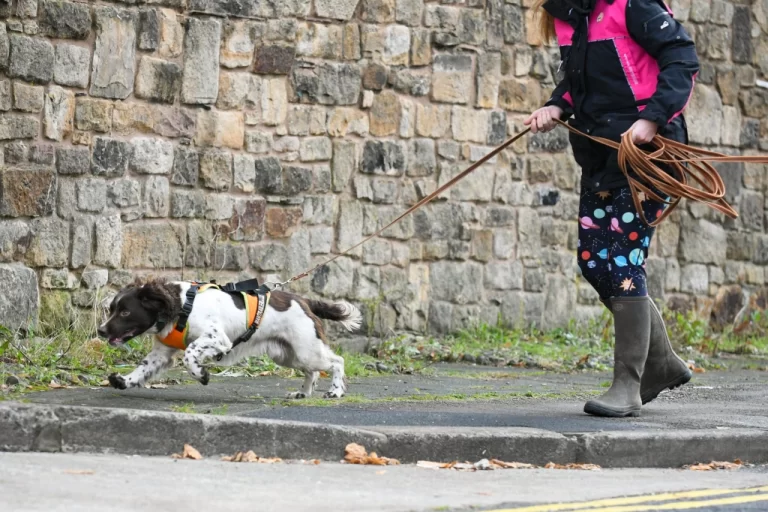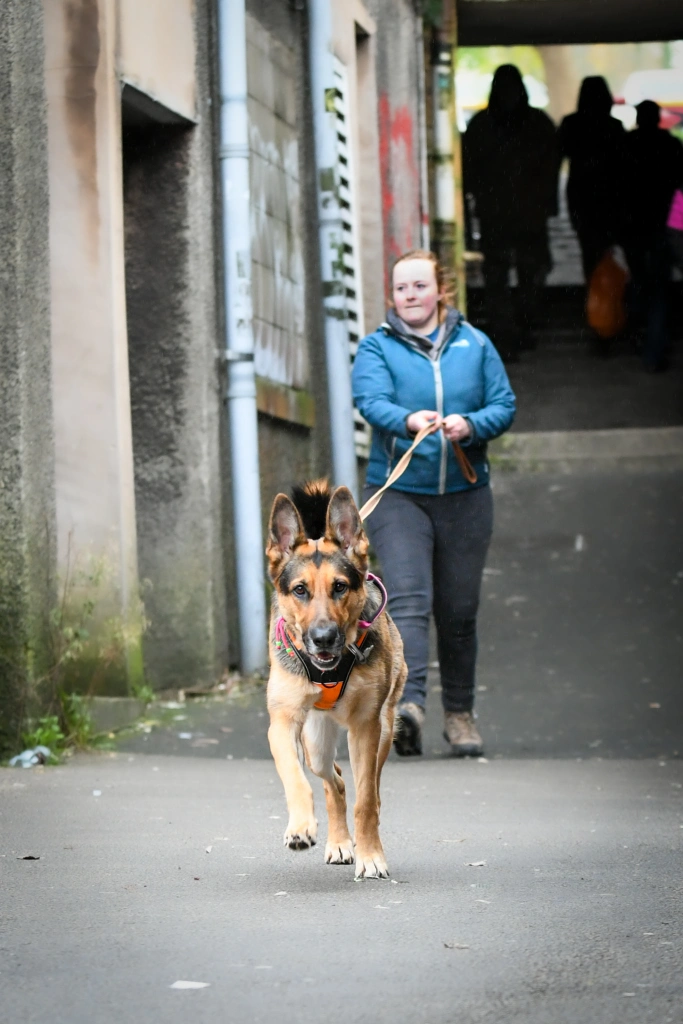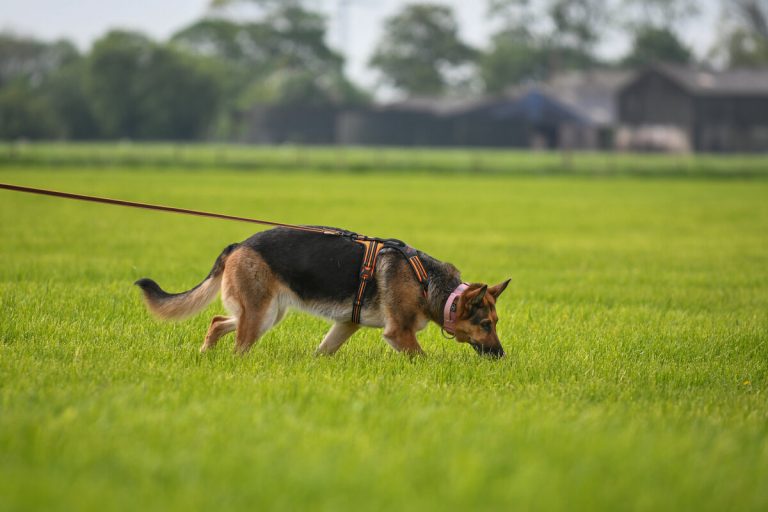The Scent Article in Mantrailing
The scent article is something someone has touched or worn, but have then walked away from, leaving a trail of scent for the dogs to follow.
The basis of mantrailing is the dog following the scent from that article to that specific person, rather than finding just anyone in the environment.
In the mantrainling business it is simple: no start, no trail.
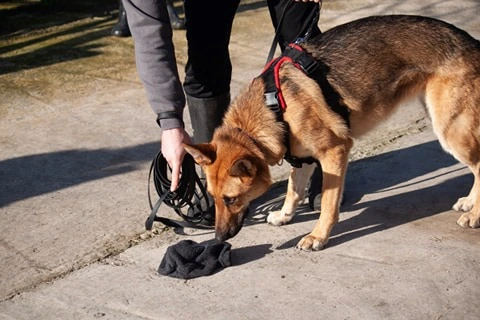
The Biology:
Every second we drop thousands of skin rafts from our bodies. These skin rafts have bacteria on them which start to expand or degrade at different rates depending on the environment.
Each person has an individual cocktail of bacteria, hormones and environmental scents they smell of. This is what we assume the dogs are following when they follow a trail.
When a person moves or walks, they leave their scent behind, especially if they touch an object. This scent will stay there for a period of time, determined by the environment, and the dogs take in that scent from the object or place touched.
The science behind this is continuously evolving, and we are learning more about how dogs process scent each year. In fact, dogs’ noses are keen enough to sniff out cancer, diabetes, drugs and explosives. Their noses are so astute that we have yet to replicate their abilities using even the most advanced technologies. With such skill, it is not surprising they can find a man hidden behind a bush in Birmingham, even when he is holding a pot of sardines!
The effect of the aforementioned bacterial change is a subject too large for this post, so we will save it for another time. For now, just think about how the bacteria might adapt over time on different parts of the body, especially when you consider where sweat is produced and which parts are the most exposed.
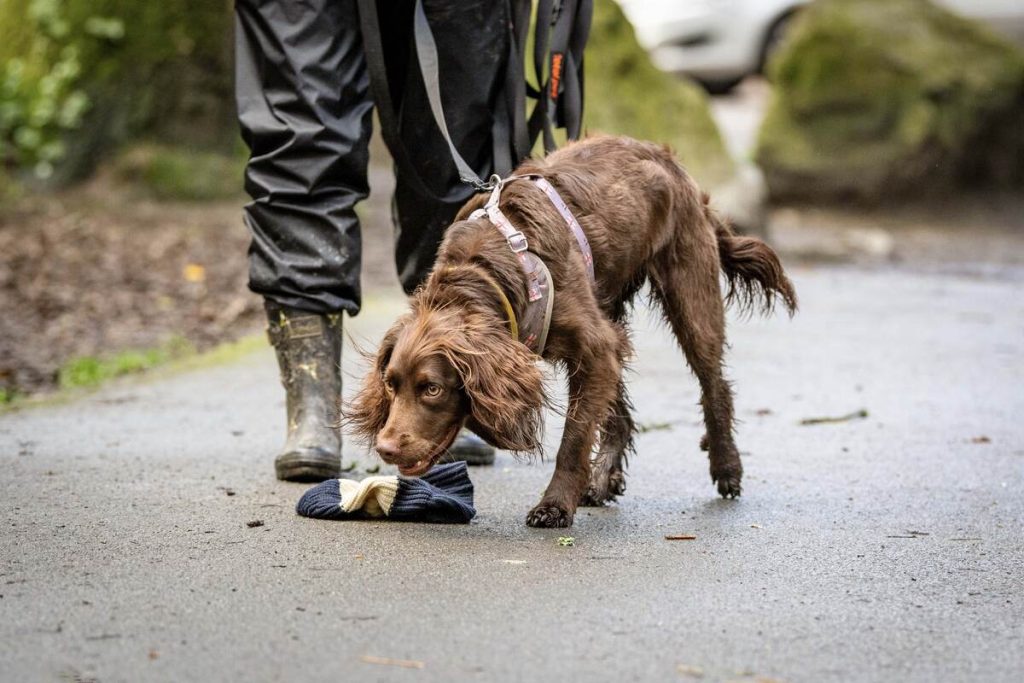
The Scent Article:
Rather than an old pair of worn socks that have been in the bottom of the washing basket for a week, a scent article should be something freshly worn so the scent degrades at the same rate the dog sets out on the trail.
The article should be something worn by the person laying the trail. You do not need to give your scent article to your own dog as its job is not to find you.
Ideally, the scent article should be something you have worn on your head, or in a sweatier area such as around the armpit or the neck. This gives the dog a better opportunity to access a stronger version of the trail layer’s “scent”.
As the trail layer it is up to you to decide which scent article you will use and to make sure it is refreshed between sessions. You do not want to stuff it in a bag to be left in the car, for example, and wearing it briefly is not the same as it actually being worn by you.
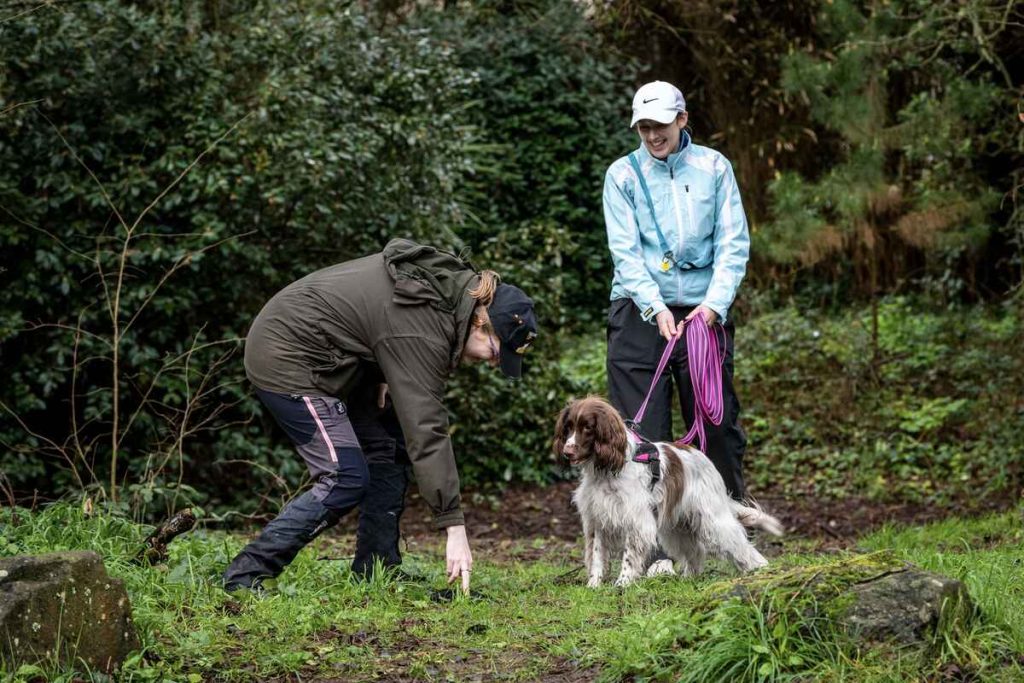
Progression in the Sport:
The complexity of the scent article should be considered for the level of the dog.
Different types of scent articles can provide a complexity to the trail making the dog think harder about the start of the trail.
The kind of scent article, or time it has been worn by a person, affects the complexity of the scent for the dog to start the trail with.
The scent article does not always need to be worn by the trail layer, it can be something they have touched and the dog can take scent off that. Be this an object we can move such as spoon or cup, or it can be something like a car handle or door handle. The possibilities are endless, and even food or other people can be used.
Using something touched by the trail layer only is called a transfer scent, and this is usually nothing something impregnated with the scent of the trail layer but just something they have touched. A handle is common one, the trail layer opens a door and leaves a building or enters one, or they walk away from a car. The location where the hand touched the object, and the dog is then tasked to take scent from it and then follow the trail.
The amount of scent left from a transfer scent can vary, and the dog will potentially have to work harder to distinguish the scent of the trail layer on the object from the environmental scents already there.
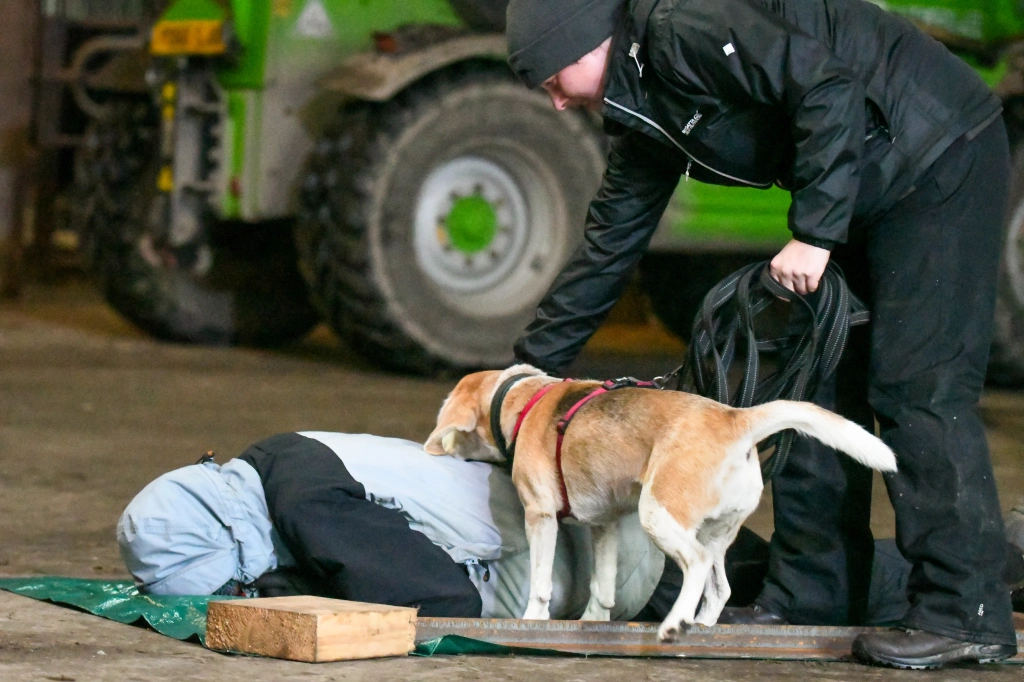
Scent Cue:
The cue used for taking scent is entirely up to you as a handler, but it needs to not be used for anything else or have any previous association.
I have typically used common sense words such as “sniff”, “scent” and “check” associated with taking scent from the scent article. Along with “trail” and “track” as the trailing command, but any words work. “google it” and “Scooby Do” are two of my favourite ones I have heard for the dog to take scent.
It is important that before you progress onto longer, aged and harder trails your dog understand the take scent cue. As with no start there is no trail, and it is easy for dogs to pretend to take scent or not really understand the process. They just then guess the location of the trail layer or the dog is guided there by the handler/instructors behaviour.
There can be many reasons why a dog doesn’t want to take scent from the article:
- It has become a negative as it has been shoved in the dogs face by the handler
- It has been something which the dog finds scary or negative
- The dog is over excited and consistently learns to bypass the scent article
- The cues used haven’t been consistent and the dog is confused
- The dog pre-scents the article (Takes scent early)
- The dog is over confident and needs harder trails
- The handler has been leading the dog
These are all correctable with training, and often come from our own human error or more accurately human interference or complication . Dogs know how to take scent, they do it all day everyday processing the world through scent in a way we have very little understanding of. We aren’t teaching them something new, we are just adding a specific cue to it as part of a game we would like them to play.
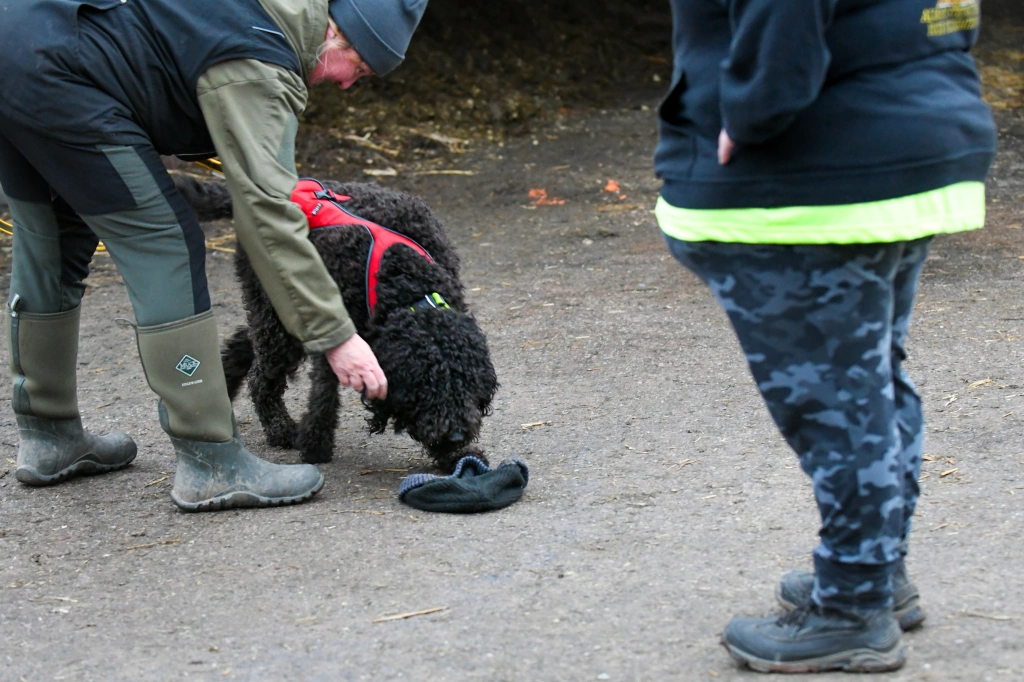
Conclusion:
Mantrailing as a sport means you can add complexity to most any part of the learning and progression, but it these complexities need to be reinforced with strong foundations.
Remember no start, no trail.
Geek out here with a webinar in the subject on my Patreon.

